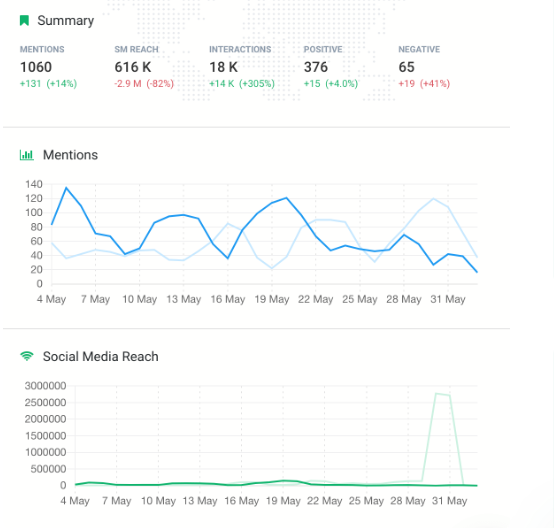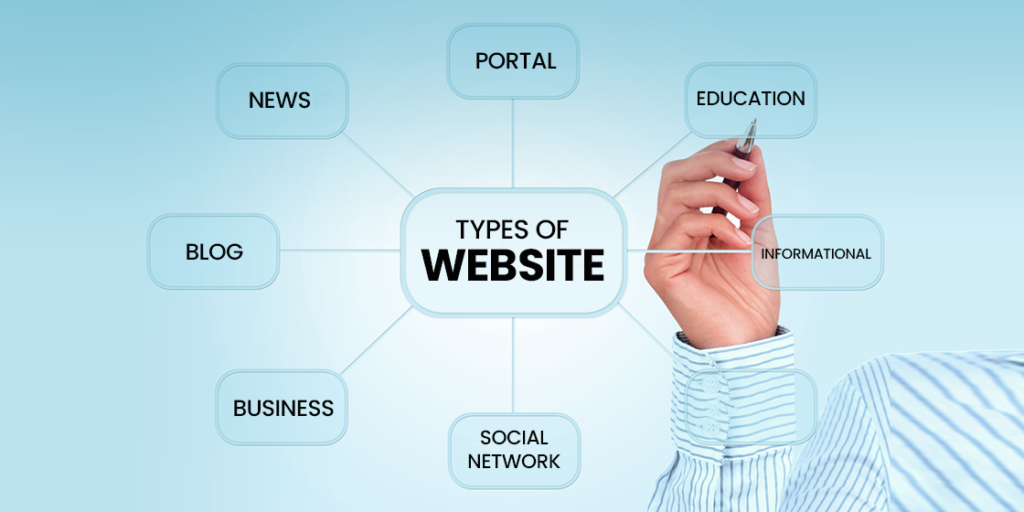Introduction
In today’s digital age, having a strong online reputation is crucial for individuals and businesses alike. The online world is a powerful platform where impressions are made instantly, and the first impression often determines future opportunities. Whether you are a small business owner, an influencer, or simply an individual navigating the vast landscape of the internet, managing your reputation online can make or break your success. In this article, we will explore the importance of building and maintaining a strong online reputation, how to do so, and answer some frequently asked questions.
Key Takeaways:
- Building an online reputation requires consistent effort in producing quality content and engaging with your audience.
- A negative reputation can be managed with professionalism, responsiveness, and transparency.
- Regular monitoring and updates to your online content are crucial to maintain credibility and trust.
- Authenticity and genuine engagement are essential for a lasting online reputation.
Why Is Online Reputation Important?
A strong online reputation is essential because it establishes credibility and trust. Whether people are looking for a service, product, or even hiring someone, they are likely to research online before making a decision. Potential customers, partners, or employers often base their decisions on what they find about you on search engines and social media platforms. A good reputation can increase customer loyalty, enhance job opportunities, and foster long-term business growth, while a poor reputation can deter opportunities and impact your personal or professional brand.
Steps to Building a Strong Online Reputation
In the era of the Internet the customer checks the company before using its offer even if he’s going to do it offline. He doesn’t look only for the products or meals descriptions but also wants to know other clients opinions.
By your webpage, blog, social media activity and communication style you can help your potential customer to find what he is looking for.
1. Monitor the Web
2. Design a user-friendly website
3. Write a blog
4. Be active on social media
5. Reply to every request or opinion
6. Share your achievements and awards
7. Keep your content simple
Monitor the Web
Before you start any brand building activities, you need to know what people are already saying about your brand. Even if you don’t run any online campaigns, your potential customers might be looking for information about your company.
Monitoring brand reputation will help you assess the current state of your business reputation. You will know whether your reputation is positive and you have a solid base to build on. Or maybe you should work some more on positive brand reputation?
With a media monitoring tool you can:
- Measure the volume of mentions. This metric will tell you how many times your keyword has been mentioned online. If you see a spike in the volume of mentions, it means that you brand building campaign is working — more and more people are talking about your brand.
- Track the sentiment. Sentiment analysis will tell you whether the talk around your brand is positive or negative. If it’s positive, then your campaign is going well. If not, there’s a potential storm going on around your brand and you need to act quickly.
- Set up notification systems. The sooner you know about any issues, the faster you can react.
- Measure social media reach. You want to know what was the impact of your brand reputation building campaign. One of the metrics you can use to calculate the result of the campaign is the estimated social media reach. This metric will tell you how many social media users could have come in contact with your messages.

Design a user-friendly website
In the real world you often give the clients a small piece of paper with your company name, address and contact number. On the Internet, this informational function belongs to your webpage. Therefore, you should think over its whole conception and content.
It is the best to start with a domain name which should be catchy, short and unambiguous. Most often it is the name of your brand.
Key Principles of a User-Friendly Website
Accessibility Features
A truly user-friendly website is accessible to all visitors, including those with disabilities. Features like alternative text for images, keyboard navigation, and high-contrast design can help make your website more inclusive.
Simple and Intuitive Navigation
Navigation is one of the most important elements in web design. A clear and simple navigation system allows visitors to easily find the information they are looking for. The layout should be consistent across all pages, and the menu should be accessible and easy to use.
Mobile Responsiveness
With a growing number of users browsing the web on mobile devices, it’s crucial that your website is designed to be mobile-friendly. A responsive design ensures that your website adapts seamlessly to different screen sizes, offering an optimal experience whether viewed on a phone, tablet, or desktop.
Fast Loading Speed
Users expect a website to load quickly. Studies show that even a one-second delay in page load time can negatively impact conversion rates. Optimizing images, using efficient coding, and choosing reliable web hosting can improve your site’s loading speed.
Clear and Consistent Design
A consistent design with a well-thought-out color scheme, typography, and layout helps users feel comfortable and focused on your content. Visual hierarchy—where important elements stand out more clearly than others—guides the user’s attention to key areas of your site.
Easy-to-Read Content
Well-organized and easy-to-read content enhances user experience. Use short paragraphs, bullet points, and headings to break up text. Make sure the font size is readable and contrast well with the background.
Call-to-Action (CTA) Buttons
Every website should have clear call-to-action buttons, whether it’s “Buy Now,” “Contact Us,” or “Learn More.” These buttons should stand out on the page and be easy to locate, encouraging users to take the next step in their journey.
Types of Websites

Websites vary in function depending on their purpose, audience, and industry. Here are a few types of websites and their key features that contribute to a user-friendly design.
1. E-commerce Websites
E-commerce websites allow users to shop online and purchase products or services. The design of an e-commerce site is crucial for encouraging users to make purchases.
Key Features:
- Easy navigation between categories and products.
- Clear product descriptions and high-quality images.
- Secure checkout process with multiple payment options.
- Search functionality and filters for easy product discovery.
- Responsive design for shopping on mobile devices.
Example:
Amazon – Amazon is a great example of a user-friendly e-commerce website. It has an easy-to-navigate layout, intuitive search and filtering features, and fast loading times. The checkout process is also streamlined, making it simple for users to make purchases.
2. Blog Websites
Blog websites are designed to provide content in the form of articles, tutorials, and posts. A user-friendly blog site makes it easy for users to read content and navigate between different articles or categories.
Key Features:
- Clean, clutter-free layout.
- Easy navigation with clear categories or tags.
- Search functionality to find posts.
- Social sharing options.
- Engaging visuals to complement the content.
Example:
Medium – Medium is a popular blogging platform that emphasizes simplicity. The design features a minimalistic layout with easy navigation and clean typography. The platform also allows users to easily engage with content by commenting, sharing, or clapping for articles.
3. Portfolio Websites
Portfolio websites are designed to showcase an individual’s or company’s work, typically used by artists, designers, photographers, and other creatives. A portfolio website needs to highlight work effectively without overwhelming the visitor.
Key Features:
- High-quality visuals of work with a focus on the content.
- Simple, easy-to-use navigation to explore various projects.
- Contact information and call-to-action for inquiries.
- Minimal distractions and clutter.
Example:
Behance – Behance is a portfolio platform used by creative professionals to showcase their work. The platform’s design highlights projects in a grid layout, making it easy for users to browse through different types of work. It also includes options for engaging with content and finding collaborators.
4. Corporate/Business Websites
Business websites serve to inform potential clients or customers about the company’s products, services, and mission. They also often include features such as blogs, contact information, and social media links.
Key Features:
- Clear company branding and messaging.
- Service or product pages with easy-to-understand descriptions.
- Contact form and details for easy communication.
- Testimonials or case studies to build credibility.
Example:
Apple – Apple’s website design reflects its clean, minimalistic brand image. The navigation is intuitive, and the product pages feature large, high-quality images, clear descriptions, and call-to-action buttons like “Buy Now.” It’s easy for users to find what they’re looking for, whether it’s product information, support, or contact details.
5. Educational Websites
Educational websites provide information on a particular subject or offer online learning courses. The design should be clean, easy to navigate, and allow users to find resources or courses with ease.
Key Features:
- Clear navigation between subjects or courses.
- Search functionality to find specific learning materials.
- Interactive elements like quizzes or discussion boards.
- User progress tracking for courses.
Example:
Coursera – Coursera is an online learning platform that offers courses from universities around the world. The website is user-friendly, with categories for different types of courses, detailed course descriptions, and a streamlined process for enrolling and starting courses.
6. News Websites
Write a blog

Content is king! This old saying is still true. Investing in a robust content marketing strategy will bear fruit.
Running a blog popular in your industry can have various benefits to building a positive online presence.
First, writing a blog will help you grow brand awareness. The more people know about your brand, the more are they willing to buy your products. A blog will help you organically establish your company as an industry leader. To do that you need to publish well-researched articles regularly.
Share your knowledge, bad and good experiences, and reveal some behind-the-scenes mysteries. This will help you become a go-to brand within your industry
Be active on social media
Social media profile is a must when you would like people to find your business. While they seek for information they don’t stop at the search engine. Checking restaurants, hotels or advertising agencies on Facebook is often the first thing potential clients do before deciding for a particular offer. On your fan page try to post interesting and entertaining content which will engage your followers.
The presence in other social media channels will also help your company reputation. You can inform about the newest products or links to articles on your webpage on Twitter. Remember to write brief and conspicious posts in there.
Types of Social Media Platforms

There are various types of social media platforms, each with its own audience and unique features. Below are the main types of social media platforms and how they serve different purposes.
Social Networking Sites (SNS)
Social networking sites are platforms where users create profiles, connect with friends or followers, and share content. These platforms allow users to interact through likes, comments, and shares. Examples include:
- Facebook: Great for building communities, sharing news, and running targeted ads.LinkedIn: Ideal for professional networking, job searching, and sharing industry-related content.
Image and Video Sharing Platforms
Image and video sharing platforms focus on visual content. These platforms are ideal for businesses, influencers, and creators who want to showcase products, services, or personal content in a visually compelling way.
- Instagram: Popular for sharing photos, stories, and short videos. It’s widely used by brands, influencers, and individuals to showcase lifestyle, fashion, and products.YouTube: A video-centric platform used to share tutorials, vlogs, product demos, and entertainment content.
Microblogging Platforms
Microblogging platforms allow users to share short, concise posts or updates, often with links, images, or videos. These platforms are perfect for real-time communication and updates.
- Twitter: Best for news, updates, short comments, and participating in trending conversations.Tumblr: A more niche platform focused on creative content, art, and niche communities.
Social Bookmarking and Content Discovery Platforms
These platforms help users find and share interesting content or news articles. They are designed for content discovery and curation.
- Pinterest: Primarily for sharing and discovering images related to lifestyle, DIY, fashion, and inspiration.Reddit: A forum-based platform where users discuss topics of interest, share content, and vote on posts.
Social Messaging Platforms
Messaging platforms allow users to communicate privately or in groups, but many also offer features like sharing media, sending payments, or playing games.
- WhatsApp: A messaging app for private conversations, group chats, and media sharing.Facebook Messenger: Integrated with Facebook, allowing direct communication with friends or brands.
Reply to every request or opinion
It is important to show your current or potential clients that your business is accessible and you treat people respectfully. For this reason, you should respond to every online message or review. If someone’s comment is negative, by writing a polite and understanding answer, you will probably avoid conflict and spreading bad opinions. You shouldn’t ignore the positive posts as well. The best is to take advantage of them and proudly share them on your social media profiles. It would be a great proof of the quality of your services or products.
Share your achievements and awards

People are looking for companies they can trust. Before making a decision, they will research the brand and product extensively.
One of the ways to build trust is by sharing positive experience of others. You can show off your achievements or awards or any positive feedback you get from happy customers.
There are many tools that will help you manage and display the reviews about your brand, one of the is BrightLocal.
Keep your content simple
No matter if you fill in some section on you website, write post on your blog, Facebook fan page or Twitter account, try to use normal language. Your every written expression should be also honest and (especially in case of messages and e-mails) polite.
These are only a few ways to build a good reputation which we know they successfully work. But every company might have its own secret techniques for creating a positive image. Would you like to give some of your brilliant ideas away? If yes, share them in a comment!
Also Read : Effective Workload Management Strategies For Professionals
Conclusion
A strong online reputation is essential in the digital world, where perceptions are formed quickly. By creating valuable content, engaging with your audience, responding to reviews, and being consistent across platforms, you can establish and maintain a positive reputation. Monitoring your online presence and addressing negative feedback proactively are crucial in preserving your credibility.
FAQs
1. How long does it take to build a strong online reputation?
Building a strong online reputation takes time, usually months or even years. It requires consistent effort in producing content, engaging with the audience, and maintaining positive interactions.
2. Can a negative review damage my online reputation permanently?
Not necessarily. A negative review can be harmful, but if handled properly, it can be an opportunity to show your commitment to customer satisfaction. A professional response can help mitigate the impact.
3. How do I know if my online reputation needs improvement?
Regular monitoring of your online presence can help you identify issues. If you find negative comments or lack of engagement, these are signs that your online reputation may need attention.
4. Should I pay for online reviews?
Paying for reviews is unethical and may result in legal consequences or damage to your reputation if discovered. Authentic reviews are the best way to build trust.
5. Can social media impact my online reputation?
Yes, social media is one of the most significant factors in shaping your online reputation. Positive engagement and professional conduct on social media can enhance your reputation.
6. What should I do if someone posts negative content about me online?
Remain calm and respond professionally. If the content is false or harmful, you can request its removal from the platform or take legal action if necessary.
7. How often should I update my online content?
Regular updates, especially if you are running a blog or business, are essential. Aim to update your content at least once every few months to keep it fresh and relevant.



